Must-Have Features to Build an E-commerce Website
Creating an e-commerce website that truly resonates with customers is not as easy as it sounds. With so many options out there, it's important to make sure your site stands out. Offering great products is a good starting point, but it’s the overall experience that will truly make the difference. A good e-commerce website is easy to navigate, fast, and reliable, making a world of difference in converting browsers into buyers. People today don’t just want to shop—they want to feel comfortable and confident while doing it. Building trust is key. If customers feel safe and valued on your site, they’re more likely to follow through with their purchase.
Take the cart feature, for example. It’s not just a simple place to store items before checking out. For many customers, it’s a place where they check if there are any discounts or special offers available. Many e-commerce website features enhance the cart experience by showing discounts, limited-time promotions, or even personalized recommendations. It’s a quick way for shoppers to keep track of what they’re interested in, and it’s often where decisions are made. A cart that’s easy to update, provides real-time pricing info, and gives visibility to available deals can nudge shoppers to finalize their purchase. In this blog, we’ll explore the must-have features that can turn your website into a trusted shopping destination that keeps customers coming back. Whether you're looking to build an e-commerce website from scratch or improve your existing one, the right e-commerce website design can help you achieve lasting success.
1. Seamless and Secure Payment Options
When it comes to SEO for e-commerce websites, the checkout process is the final hurdle between a customer and a completed purchase. If this process is cumbersome, slow, or insecure, the chances of cart abandonment skyrocket. Customers expect a smooth, efficient, and secure payment experience, which is why it is essential to build an e-commerce website with a seamless checkout flow.
A seamless checkout experience is not just about simplicity; it’s about building trust. Customers need to feel secure about sharing their payment details, and they want to know that their personal and financial information is protected. Offering a variety of payment methods gives customers the flexibility to choose their preferred method, whether it’s credit/debit cards, digital wallets, or even buy-now-pay-later options. These are essential e-commerce website features that enhance the user experience and drive conversions.
What’s in it?
A secure and smooth checkout experience can significantly reduce cart abandonment rates and improve customer satisfaction. Speed, reliability, and security are paramount when you build an e-commerce website. Security measures such as SSL encryption, fraud detection systems, and tokenization ensure that your website is secure and provide reassurance that customer data is safe. These features are essential for any SEO for e-commerce websites, as they not only enhance user experience but also help build trust with your customers, encouraging repeat purchases.
Examples:
Amazon Pay’s one-click checkout : Amazon’s one-click payment system makes buying effortless by securely storing payment details and enabling quick transactions.
PayPal, Stripe, and Razorpay : These gateways offer flexibility and allow customers to choose their preferred payment method.
Real-time Example :
Amazon’s one-click payment system has become an industry standard for simplifying checkout. By eliminating the need for customers to re-enter their details every time, it significantly speeds up the transaction process. This feature has proven to increase impulse purchases and reduce cart abandonment rates, creating a frictionless experience that encourages customers to return.

2. Mobile Optimization
With an increasing number of consumers shopping via smartphones, your e-commerce website must be optimized for mobile devices. Mobile optimization is no longer a luxury, it's a necessity. A mobile-friendly website ensures that users can easily browse, shop, and checkout without encountering any obstacles.
The user experience on mobile should mirror the experience on a desktop site—smooth, fast, and easy to navigate. Customers expect the same functionality and ease of use on mobile that they would get on a larger screen. This feature is key to enhancing conversion rates, as shoppers who find it hard to navigate your site on mobile are likely to leave without making a purchase. E-commerce website features like mobile optimization are critical for a good e-commerce website. Additionally, e-commerce website design plays a vital role in providing a seamless experience for mobile users.
What’s in it?
Mobile optimization is crucial for any e-commerce website features, ensuring that your website is fully responsive and adapts to different screen sizes and devices. A good e-commerce website design should prioritize fast load times, clear calls to action, and a straightforward path to checkout. This mobile-friendly approach enhances the user experience, increases engagement, and improves conversion rates, allowing customers to shop effortlessly on their mobile devices.
Examples:
Mobile-first design : Websites like eBay and Amazon prioritize mobile-first design, ensuring that mobile users have a smooth and enjoyable experience when shopping.
Simplified checkout on mobile : Mobile payment options like Google Pay and Apple Pay make it easier for users to complete purchases on mobile without needing to manually input credit card details.
Real-time Example :
Flipkart is a prime example of mobile optimization. The retailer’s app and mobile website are designed to offer a seamless shopping experience, from browsing to checkout. The mobile version is fast, intuitive, and responsive, ensuring that customers have a consistent experience, whether on their desktop or mobile device.

3. Personalized Recommendations
Customers love to feel like they are getting personalized attention, and one way to offer that is through personalized recommendations. By tracking browsing behavior, past purchases, and preferences, you can suggest products that are relevant to the individual customer. This not only helps customers find products they are more likely to buy, but it also increases the average order value.
Personalization is no longer limited to just offering recommendations; it extends to personalized email campaigns, product suggestions based on browsing behavior, and even personalized landing pages. This creates a more intimate shopping experience that resonates with customers, contributing to a good e-commerce website. Effective e-commerce website design is key to implementing these personalized experiences, while SEO for e-commerce websites ensures these features are easily discoverable by your target audience.
What’s in it?
E-commerce website design plays a key role in delivering personalized recommendations, helping customers find what they’re looking for quickly and introducing them to products they might not have discovered otherwise. This experience increases engagement, enhances the user experience, and boosts the chances of a conversion. By optimizing your site with relevant suggestions, you're not only improving the shopping experience but also leveraging SEO for e-commerce websites to drive more traffic and sales.
Examples:
Amazon’s product suggestions : Based on your purchase and browsing history, Amazon tailors its homepage and recommendations to your tastes, increasing the chances of repeat purchases.
Netflix’s recommendation system : Similar to e-commerce websites, Netflix uses browsing history to suggest shows and movies that users are likely to enjoy.
Real-time Example :
Spotify excels at personalized recommendations, offering users curated playlists based on their listening history. This increases engagement and keeps users coming back for more. Similarly, e-commerce websites can leverage personalized recommendations to keep customers engaged and drive more sales.

4. Live Chat Support
Customers often have questions or need assistance before making a purchase, and providing instant support via live chat can make a significant difference in converting visitors into buyers. Live chat offers real-time assistance, which is crucial for preventing potential customers from leaving your site out of frustration.
Whether customers have questions about product details, delivery times, or payment issues, being able to get instant answers can lead to higher satisfaction and conversion rates. Incorporating this feature is essential when you build an e-commerce website. It enhances the overall e-commerce website features, contributing to a good e-commerce website that prioritizes customer support.
What’s in it?
Live chat support is an essential feature when you build an e-commerce website. It bridges the communication gap and provides immediate answers to customer queries, ensuring a seamless shopping experience. This enhances e-commerce website features, as it builds trust, reduces friction, and keeps customers engaged throughout their purchasing journey. With real-time support, you can address concerns instantly, leading to higher customer satisfaction and improved conversion rates.
Examples:
Zappos’ live chat support : Zappos offers exceptional customer service through live chat, ensuring customers receive immediate assistance whenever needed.
Etsy’s messaging system : Etsy allows buyers and sellers to communicate directly through live chat, which fosters trust and helps close sales.
Real-time Example :
Amazon is known for its exceptional customer service, offering live chat support 24/7. This level of support has resulted in higher customer loyalty and increased sales, as customers feel confident that they can get help whenever they need it.

5. Detailed Product Pages
A great product page is more than just a picture and a price. Customers need detailed information to make informed purchasing decisions. High-quality images, thorough descriptions, and specifications help customers understand what they are buying and why it’s worth the price.
In addition to the basics, including customer reviews, sizing guides, and the availability of different variations can significantly enhance a product page. This is a key aspect of e-commerce website design, ensuring that every product page is informative and conversion-friendly. Proper SEO for e-commerce websites also plays a crucial role in driving traffic to these pages. When you build an e-commerce website, paying attention to product page details is vital for boosting conversions.
What’s in it?
Product pages that offer detailed information are crucial for a good e-commerce website. They reduce uncertainty, increase trust, and give customers confidence in their purchasing decisions. A well-designed e-commerce website design with clear product details, images, and specifications enhances the user experience, making it easier for customers to make informed choices and ultimately leading to more conversions.
Examples:
Sephora’s product pages : Detailed descriptions, user reviews, and swatches give customers a comprehensive understanding of the product before purchasing.
Nike’s shoe customization page : Allows customers to personalize shoes, which not only gives them control but also boosts their sense of ownership.
Real-time Example :
Apple’s product pages are a great example of how detailed descriptions, high-resolution images, and features like comparison tools can enhance a product page. This ensures customers are fully informed, leading to more purchases.
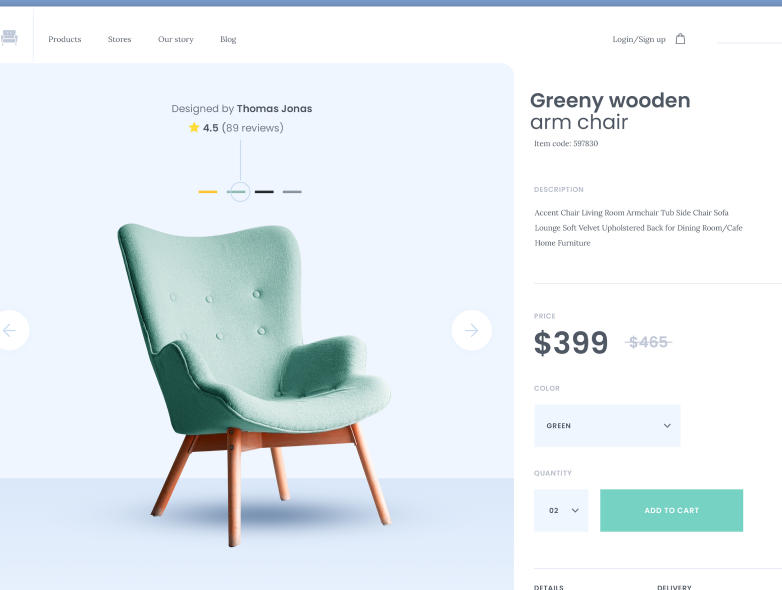
6. Fast Page Load Speed
In the fast-paced world of e-commerce, speed is essential. If your website takes too long to load, visitors will quickly bounce off and head to a competitor's site. Studies show that slow-loading pages are a major cause of cart abandonment, with customers losing patience after just a few seconds of waiting. Ensuring that your website loads quickly, especially on mobile devices, is critical for retaining customers and boosting conversions.
This is where e-commerce website features such as optimized images, fast hosting, and clean coding play a significant role. A good e-commerce website ensures that speed is prioritized across both desktop and mobile experiences. Incorporating these aspects into your e-commerce website design guarantees a smooth and efficient user journey, reducing bounce rates and increasing sales.
What’s in it?
A fast-loading website is essential for providing a better user experience, improving SEO for e-commerce websites, and reducing bounce rates. By optimizing images, using caching techniques, and leveraging content delivery networks (CDNs), you can ensure that your website loads in a matter of seconds. This is crucial for maintaining a smooth shopping experience, which can ultimately help you build an e-commerce website that retains customers and boosts conversions.
Examples:
Walmart’s optimized pages : Walmart uses compressed images and optimized code to ensure fast load times, contributing to higher user satisfaction.
Google’s PageSpeed Insights : Tools like Google’s PageSpeed Insights help website owners identify performance bottlenecks and improve page speed.
Real-time Example :
Amazon understands the importance of page speed. Their website is optimized to load quickly, even during high-traffic events like Prime Day, ensuring that users can browse and checkout without delays, leading to higher conversion rates.
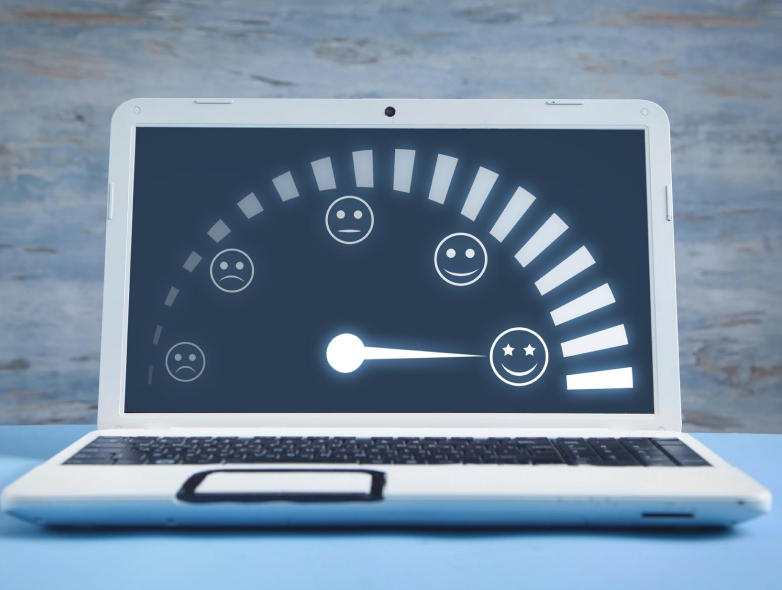
7. Easy Navigation and User Interface (UI)
A well-organized and intuitive navigation system makes it easier for customers to find products and complete their purchases. If your website is cluttered or difficult to navigate, visitors are more likely to become frustrated and leave. Simple, clear, and easy-to-use menus, search bars, and product categories are essential for improving the user experience and encouraging conversions. To build an e-commerce website that enhances navigation, focus on user-centric design principles. SEO for e-commerce websites also plays a key role here, ensuring that products are easily discoverable not only on your site but also through search engines.
What’s in it?
Clear navigation ensures that customers can easily locate what they’re looking for without unnecessary clicks. A good UI design with user-friendly features such as breadcrumbs, search filters, and clear category labels encourages customers to explore more products and ultimately make a purchase.
Examples:
Apple’s clean, simple design : Apple’s website offers an intuitive, minimalist design that lets users easily browse and find their desired products.
Target’s category filters : Target’s product filters allow customers to narrow down their search by categories like price, brand, and features, making it easier to find what they want.
Real-time Example :
Zara’s website layout is another example of easy navigation. Its clean interface, quick links to product categories, and an efficient search feature make it easy for shoppers to find products without frustration, leading to higher conversion rates.
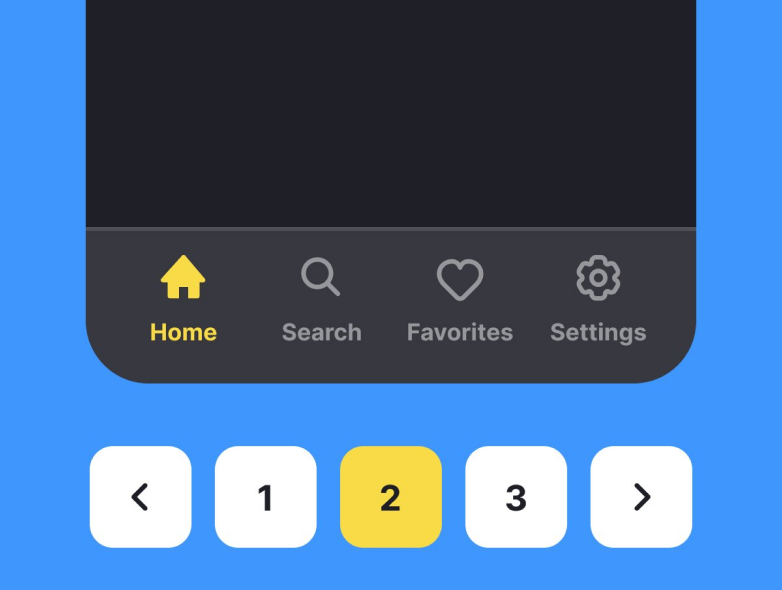
8. Social Proof and Customer Reviews
Integrating reviews as e-commerce website features can help build trust and credibility. A good e-commerce website should have an easy-to-access review section on product pages. When designing your e-commerce website, ensure that reviews are prominently displayed, making it simple for potential customers to see them.
What’s in it?
Customer reviews provide valuable insights into the quality and performance of your products. They also help establish trust and credibility, which can drive higher conversion rates. Displaying star ratings, user photos, and detailed reviews on your product pages can boost engagement and sales.
Examples:
Amazon’s product ratings : The star rating system on Amazon allows users to quickly gauge the quality of a product, while detailed reviews provide additional information.
Trustpilot integration : Many e-commerce websites integrate Trustpilot reviews to give social proof and credibility to their offerings.
Real-time Example :
Glossier successfully uses customer reviews on their product pages. The combination of high ratings and personal testimonials helps potential buyers feel more confident about purchasing, leading to higher conversion rates.
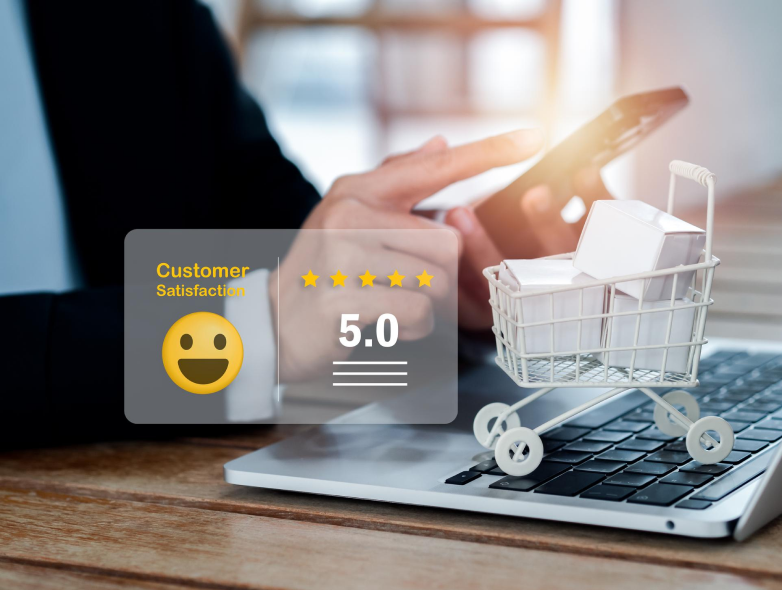
9. Exit-Intent Pop-ups
Exit-intent pop-ups are triggered when a visitor is about to leave the website, typically when their cursor moves toward the browser’s exit button. These pop-ups offer a final opportunity to engage with the customer, whether it’s through a discount, a reminder, or an upsell. When implemented correctly, exit-intent pop-ups can effectively prevent customers from abandoning the site and encourage them to complete their purchase.
In the context of SEO for e-commerce websites, exit-intent pop-ups can also be a useful tool to re-engage users who may have left the site without converting. By adding these pop-ups to your site, you enhance the e-commerce website features, improving the likelihood of conversion. To build an e-commerce website that captures potential customers at every stage, make sure the pop-ups are strategically placed and offer value to the visitors.
What’s in it?
Exit-intent pop-ups can provide a gentle nudge to customers who are on the verge of leaving your site. Offering a discount, free shipping, or highlighting popular products can persuade them to stay longer and complete their purchase.
Examples:
Macy’s exit pop-up : Macy’s offers a discount on first-time purchases via an exit-intent pop-up, encouraging customers to complete their orders.
The Birchbox subscription model : Birchbox uses pop-ups to offer discounts and remind customers of their shopping cart before they leave.
Real-time Example :
Booking.com utilizes exit-intent pop-ups to offer exclusive deals and reminders about the limited availability of rooms, prompting visitors to finalize their bookings instead of leaving the website.
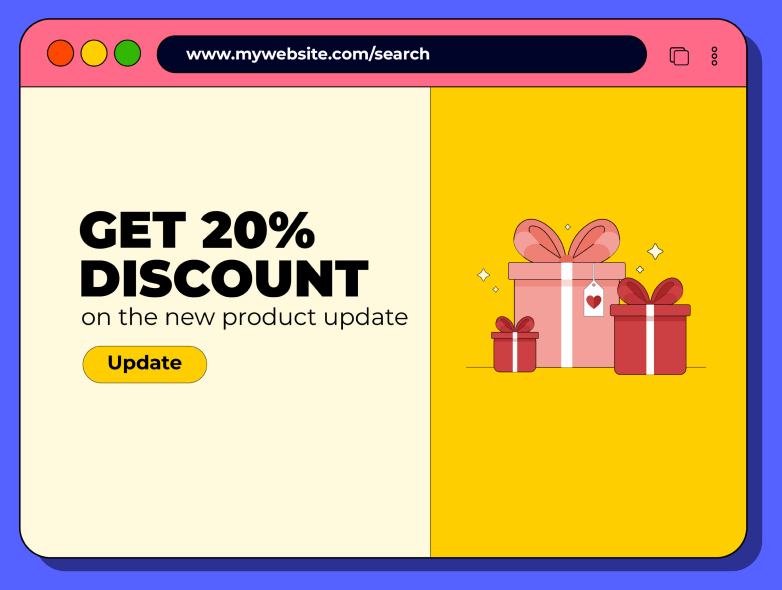
10. Customer Account Management and Wish Lists
Allowing customers to create accounts on your website provides numerous benefits for both you and them. It makes the shopping experience more personalized and convenient, enabling customers to save their details for faster checkout, track their order history, and manage preferences. Wish lists allow customers to save products they are interested in, making it easier for them to return and complete a purchase later.
A good e-commerce website not only simplifies the process of account creation but also ensures that the features are easy to navigate and enhance the user experience. With the right e-commerce website design, customer accounts become a valuable tool for building loyalty and encouraging repeat purchases.
What’s in it?
Customer accounts create a sense of ownership, encouraging repeat purchases. Wish lists also serve as a reminder for customers to return and purchase items they liked, which can lead to higher conversion rates. Additionally, customer data from accounts can be used for targeted marketing campaigns.
Examples:
Etsy’s wish lists : Etsy allows customers to save favorite products in a wish list, making it easier to revisit and purchase later.
ASOS’s account management features : ASOS enables customers to track their orders, save shopping preferences, and view their purchase history, making future shopping easier.
Real-time Example :
eBay uses customer accounts to enhance shopping experiences, allowing users to keep track of auctions, saved searches, and past purchases, which boosts customer retention and encourages repeat transactions.

Conclusion
By integrating these additional features—fast page load speed, easy navigation, social proof, exit-intent pop-ups, and customer account management—into your e-commerce website, you will create a comprehensive, engaging, and efficient shopping experience for your customers. These e-commerce website features, when implemented correctly, not only improve user experience but also boost conversions, increase average order values, and encourage customer loyalty.
By incorporating these powerful features into your e-commerce website, you're not only enhancing the user experience but also setting your business up for long-term success. A seamless, engaging, and secure shopping journey results in higher conversions, improved customer satisfaction, and lasting loyalty. At ClickBox, we're committed to helping businesses thrive online. We specialize in digital marketing, e-commerce development, Shopify development, WordPress website development, PHP web development, and much more. Partner with us to build an e-commerce website that drives the growth your business deserves. If you have any questions or doubts, don’t hesitate to contact us. We're here to help!
John Click
Digital Marketer | SEO Copywriter | Content Strategist
Experienced digital marketer with a proven track record in creating compelling content that not only engages audiences but also drives conversions and enhances SEO visibility. My expertise extends beyond marketing strategy to crafting persuasive narratives that resonate with your target audience. I combine data-driven strategies with captivating writing to deliver measurable results, ensuring your brand shines in the digital landscape.
John Click
Digital Marketer | SEO Copywriter | Content Strategist
Experienced digital marketer with a proven track record in creating compelling content that not only engages audiences but also drives conversions and enhances SEO visibility. My expertise extends beyond marketing strategy to crafting persuasive narratives that resonate with your target audience. I combine data-driven strategies with captivating writing to deliver measurable results, ensuring your brand shines in the digital landscape.




 Digital Marketing
Digital Marketing


 Digital Marketing
Digital Marketing Digital Marketing
Digital Marketing



